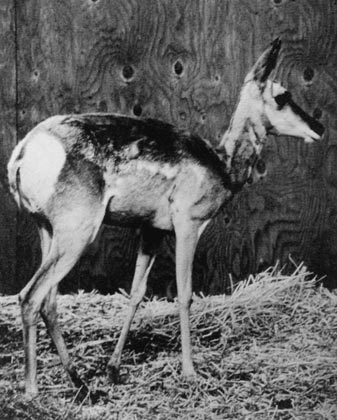
This Article From Issue
November-December 2000
Volume 88, Number 6
DOI: 10.1511/2000.41.0
Symmorphosis: On Form and Function in Shaping Life. Ewald R. Weibel; xiii + 263 pp. Harvard University Press, 2000. $45.
Just how well designed are animals and plants? Does form perfectly match biological function, or is the design of organisms via natural selection inherently sloppy and suboptimal? Much of animal design seems to conform well to operational requirements, but is this qualitative observation either quantifiable or, more importantly, relevant to our understanding of the evolution of complex functional designs? Within the specific context of exercise physiology, these important questions received considerable attention over the past several decades from the dedicated, perhaps even heroic, efforts of Ewald Weibel and the late Dick Taylor. In 1981, they proposed the concept of symmorphosis to indicate the "precise tuning of all structural elements to each other and to the overall functional system." Twenty years later, can we confirm or reject the idea of symmorphosis?
By systematically evaluating the pathways of oxygen and fuel supply to exercising muscle, Taylor, Weibel and numerous colleagues tested for diverse mammal taxa the hypothesis of symmorphosis. The detailed anatomical and physiological studies necessary for such an analysis are well delineated in Weibel's new book, Symmorphosis.

From Symmorphosis
Exhaustive histological, biochemical and organism-level respiratory studies are necessary to describe oxygen transport and intramuscular metabolic activity during aerobic exercise. To this end, Weibel systematically describes each step of the oxygen cascade from atmosphere into muscle. Potentially rate-limiting steps for both the cardiac and pulmonary transport of oxygen are delineated for a series of mammal species varying dramatically in body size; comparisons are also made between "athletic" and "sedentary" species of approximately the same size. Weibel's treatment serves as an excellent introduction to mammalian respiratory and exercise physiology. His writing is as concise and linearly organized as the pathway for oxygen that he so eloquently describes.
Regrettably for the concept of symmorphosis, these exhaustive studies suggest that the design of the mammalian respiratory system is highly plastic, in response to selection and training, but is otherwise suboptimal. Among mammals, variations in body size and in exercise regimen yield commensurate changes both in functional capacity to take up oxygen and in the morphological machinery required to process it, but pulmonary diffusing capacity typically exceeds the maximum demand of exercising muscle. Comparisons of different species reveal, not surprisingly, that "more athletic" taxa express both a greater capacity for oxygen uptake and a greater quantity of metabolic machinery necessary to process it. However, neither allometric nor phylogenetic comparisons of functional capacity can, in and of themselves, test the hypothesis of optimally matched fluxes along the length of a physiological cascade. For a scientifically rigorous test of symmorphosis, direct knowledge of these fluxes is necessary. Comparison of athletic and sedentary species, as categorized by Weibel, also introduces into the subsequent physiological analysis potentially confounding effects of domestication and of variable phylogenetic origins. Although well known to many workers in the emerging field of evolutionary physiology, such considerations receive short shrift here.
More generally, evolution through natural selection might be expected to yield only locally adequate rather than uniquely optimal designs. The difficulty of specifying all of the selective factors that might act on particular anatomical features, together with temporal unpredictability in these factors and perhaps constraining features of genetic architecture, suggests that optimization for any particular aspect of organismal design will be achieved only rarely. In the specific context of exercise physiology, Weibel has done an admirable job of describing both morphology and functional performance. Readers of the present volume, however, along with future contributors to the empirical structure of symmorphosis, would be well advised to recognize the historical compromise between varying demands and intrinsic constraints that has yielded present-day patterns of physiological adaptation.—Robert Dudley, Integrative Biology, University of Texas at Austin
American Scientist Comments and Discussion
To discuss our articles or comment on them, please share them and tag American Scientist on social media platforms. Here are links to our profiles on Twitter, Facebook, and LinkedIn.
If we re-share your post, we will moderate comments/discussion following our comments policy.